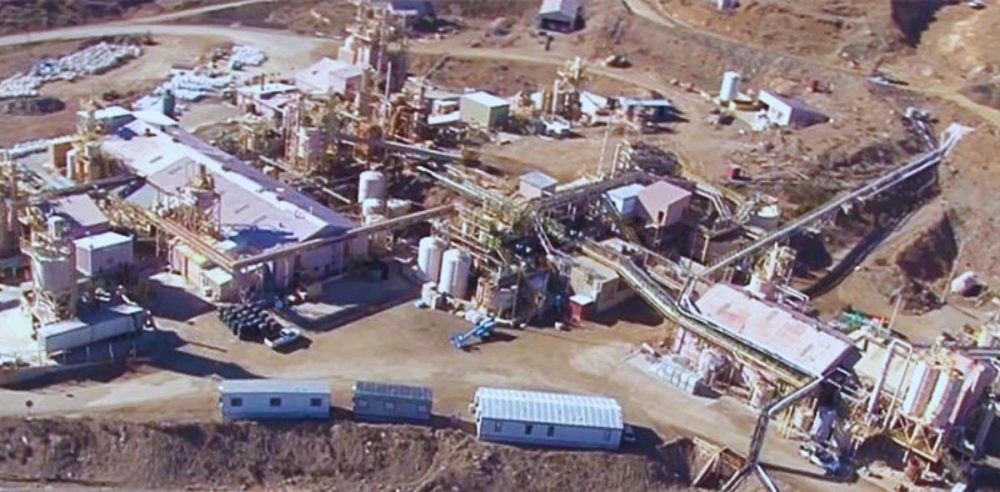This weekend, Beijing again made its geopolitical intentions unmistakably clear. China has halted the export of certain rare earth minerals, citing vague national interests. But the real message was not lost on anyone paying attention: China is prepared to weaponize its near-monopoly on the minerals that power our missiles, electric vehicles, semiconductors, and satellites. Rare earth elements are not rare in geology, but they are scarce in sovereignty. Today, the United States has almost none.
Despite producing roughly 45,000 metric tons of rare earth oxide (REO) concentrate from its mines in 2024, the United States refined only 1,300 metric tons of usable rare earth metals and compounds. Yet our national demand exceeds 6,600 metric tons annually. That means more than 80 percent of what we use is imported, and most of those imports come, directly or indirectly, from China. It is not merely dependence. It is exposure. And it is unacceptable.
One US company has invested approximately $2 billion so far into domestic rare earth production, MP Materials is building the separation capacity at Mountain Pass, California. That investment has paid dividends. It enabled the first domestic production of separated neodymium-praseodymium oxide in decades. Still, it has taken nearly $2 billion to generate only 1,300 metric tons of annual refined output. While some of that capital established fixed infrastructure that can now be scaled more efficiently, the gap between production and need remains daunting.
Let us not misunderstand the stakes. These minerals are the sinew of the modern economy. From hypersonic missiles to wind turbines, from F-35s to smartphones, the global supply chain for rare earths is both a marvel of specialization and a strategic liability. Until now, the United States has tried to thread the needle with a mixture of private initiative and limited public support. But in the face of Chinese leverage and clear belligerence, we must now choose decisiveness over delicacy.
Fortunately, the solution is within reach. Based on capital investment and production benchmarks already observed, we estimate that it would require between $10 and $15 billion to fully replace America’s dependence on foreign rare earths. That includes not just light rare earth processing, but also facilities to separate heavy elements like dysprosium and terbium, which are crucial for military-grade permanent magnets. These are not speculative projections. They are derived from real-world data from existing operations, such as Mountain Pass and emerging Department of Defense-backed facilities in Texas.
To place this figure in context, consider that the US government spends nearly twice that amount annually on foreign aid. We are not talking about reinventing industrial alchemy. We are talking about building separation plants, alloy production lines, and magnet factories. These are one-time capital investments with decades-long return horizons. The bottleneck is not mineral availability. The bottleneck is political inertia, environmental overregulation, and the belief that markets alone can secure national defense.
This is where leadership matters. We need a moonshot. We need a Manhattan Project for rare earths. And we need it now.
President Trump should declare a national emergency and invoke the Defense Production Act to streamline permitting, suspend counterproductive environmental barriers, and fast-track critical infrastructure. Just as President Eisenhower built the Interstate Highway System under the auspices of national security, so too should this administration rebuild the rare earth supply chain as a matter of strategic sovereignty. Let China howl. Let the bureaucrats wring their hands. But let us get on with the business of building.
Some will object, as they always do, that the free market should determine what and when to build. But this is not a matter of free markets. It is a matter of free nations. Without access to rare earths, our capacity to produce cutting-edge weapons, satellites, and energy infrastructure will be impaired, and our geopolitical leverage diminished. The market cannot fix that because the market has already been captured by a command economy that exploits its dominance as a weapon. Our choice is not between market and state. It is between dependence and determination.
Others will argue that $15 billion is a hefty sum. But it is a rounding error in the federal budget. If we can afford to fund gender programs in Pakistan, surely we can afford to mine and refine strategic minerals in Nevada and Texas. If we can defend the borders of Ukraine, we can secure our own industrial base. And if we can pay federal contractors to measure carbon footprints, we can pay American workers to separate rare earths.
Trump’s administration, already stacked with capable and patriotic leaders—Marco Rubio at State, Pete Hegseth at Defense, and Scott Bessent at Treasury—is uniquely positioned to execute such a plan. Elon Musk, now leading the Department of Government Efficiency, understands the engineering, the urgency, and the innovation required. The pieces are on the board. What we need now is a commander who will move them.
This is not merely an industrial policy. It is a test of political will. In the Cold War, we did not debate whether to produce uranium. We did not outsource our rocket parts to the Soviet Union. We built. We sacrificed. We won. That ethic, that urgency, must return. If we begin now, we could, within a decade, produce all the rare earth materials we need on U.S. soil. That means freedom from foreign blackmail. That means control over the supply chains that power our economy and defend our sovereignty.
There is no reason America cannot lead in rare earth production. The geology is here. The talent is here. The capital is waiting. What has been missing is the political courage to say: enough.
President Trump, the time has come. Call the question. Declare the emergency. Fund the solution. Let us secure our rare earth future before Beijing shuts the door for good.
A. Muse is an entrepreneur and social media influencer.



